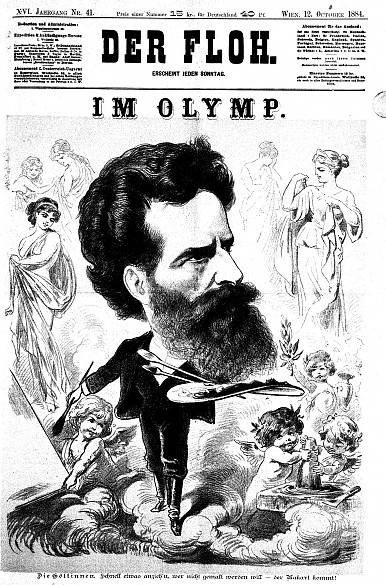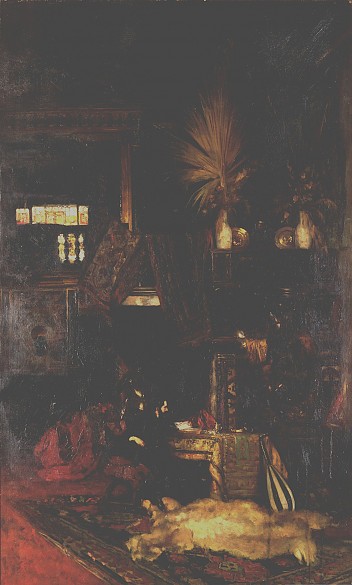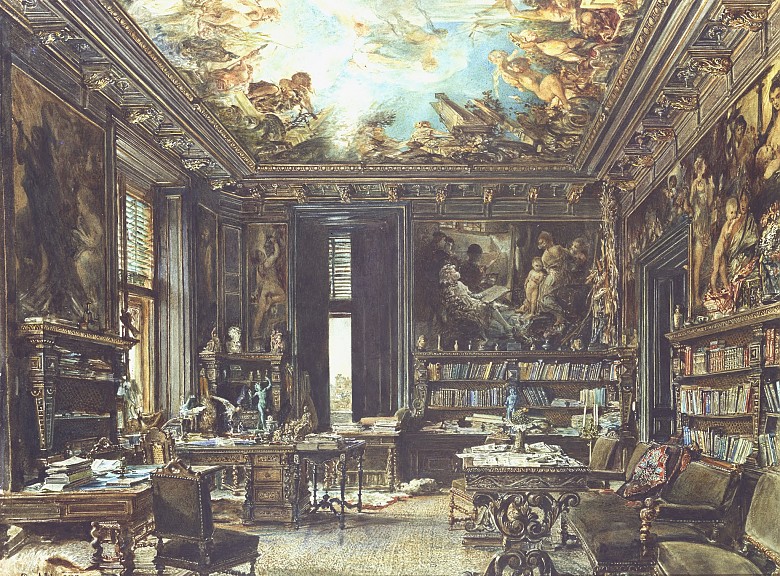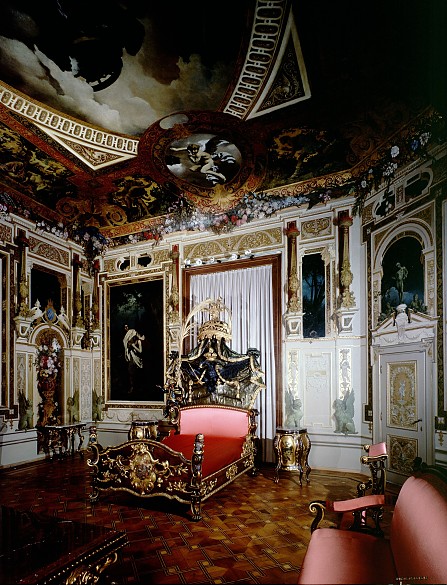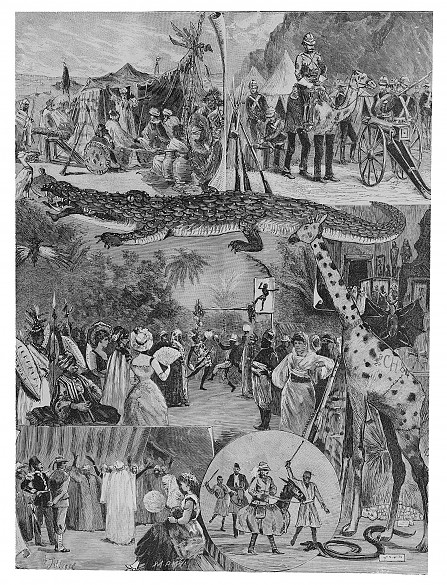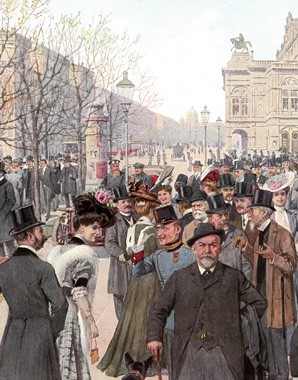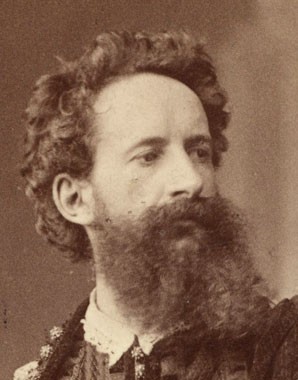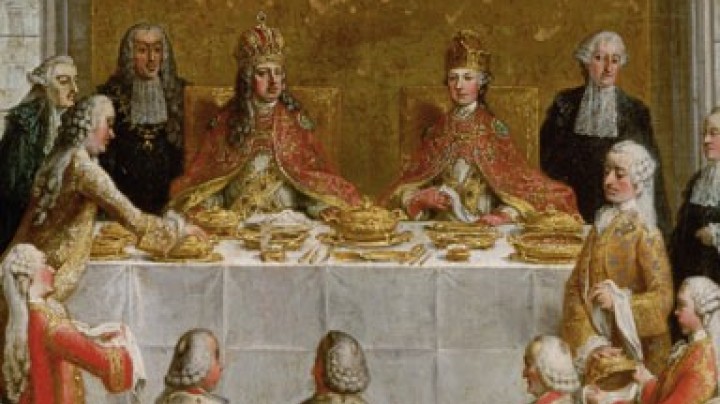Live like a prince, party like an artist
As ‘Lords of the Ringstrasse’ the upper middle classes assumed another role that had formerly been the preserve of the nobility, as patrons of the arts. The interiors of their apartments and lifestyles were influenced by the ‘painter-prince’ Hans Makart.
Ludwig Hevesi was a writer, journalist (for example for the *Wiener Fremdenblatt* and the *Pester Lloyd*) and major chronicler of Austrian affairs during the reign of Franz Joseph.Amid all the art a whole grove of desiccated, seemingly gilded palms proliferates, flowers bloom, crystals sparkle, old carved boxwood figures shimmer in oblique lights, the background a whole gallimaufry of chandeliers with female figurines, old busts, vases, caskets.
An opulent magnificence in furnishings and interior decoration served to demonstrate their claim to power; monumental history paintings were particularly popular. Hans Makart, the ‘painter-prince’ of the Ringstrasse era, supplied the décor desired by the aspiring upper middle classes to create interiors that emulated as closely as possible those of the nobility.
In his studio with its oriental décor illustrious guests dressed in historical costumes participated in glittering celebrations. Makart’s extravagant lifestyle seized the city’s imagination: a rose was bred and named after him, ladies vied with one another to copy the artistic costumes and feathered hats in his paintings. His studio became a place of pilgrimage that could be viewed daily upon payment of an admission charge and thus became the model on which the décor of many an upper middle-class drawing room was based.
Makart also worked for the imperial family, which made him even more attractive in the eyes of the bourgeoisie. For the Empress’s bedroom in the Hermes Villa in the Lainzer Tiergarten he designed murals depicting scenes from Shakespeare’s Midsummer Night’s Dream. The idea for these murals is said to have originated with the Empress herself, who identified with Titania.
Makart’s lifestyle had a considerable influence not only on the upper middle classes but also on his fellow-artists. The Vienna Künstlerhaus (the exhibition building of the Austrian Society of Artists) held balls in historical costume on the model of the legendary parties held in his studio. Social events had been held there regularly since 1870. The climax of the year was the Fest der Künstler, a party held during Carnival time for artists and their friends, which had a different theme each year. These festivities were mostly parodistic in intent. The organisers caricatured their own work or their fellow-artists, as for example at the ball held in 1901, which parodied the exhibitions and the art of the Secession, the group of artists which had broken away from the Künstlerhaus. With elaborate decorations including illusionistic paintings which could be admired for a week following the event for a small charge, the party created a world of illusion. The 1885 Carnival party had an African theme – one of the decorations was a crocodile with scales made of green enamel saucepan lids.
These balls also had historical and futuristic themes, and because access to them was restricted they remained an entertainment for the elite. Guests included members of the imperial family such as Crown Prince Rudolf, though needless to say the Emperor and Empress never attended such festivities.
